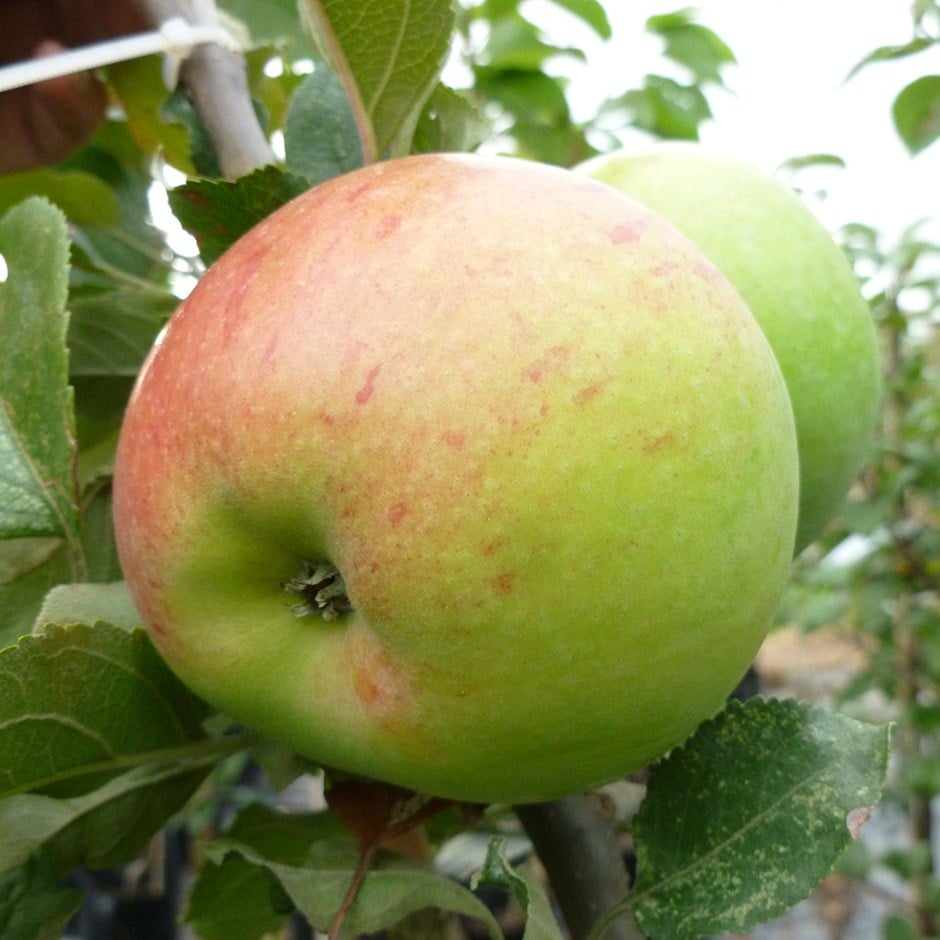apple 'Broadholme Beauty'
cooking apple
This plant is deciduous so it will lose all its leaves in autumn, then fresh new foliage appears again each spring.
- Position: full sun
- Soil: moderately fertile, moist but well-drained soil
- Rate of growth: average
- Flowering period: April to May
- Hardiness: fully hardy
For sugar-free baking with benefits, cook up green-red ‘Broadholme Beauty’ apples, a 21st century English variety ideal for diabetics as this culinary crossover star needs no added sweetener thanks to naturally high pectin levels. Thin skins verge on translucent, hinting at the mellow ivory flesh within yet a rosy blush betrays the secret zing within each bite. Heavy regular crops of large round fruit hold up impressively to heat, retaining texture when cooked.
Pollination information: This apple belongs to pollination group 2, and requires a pollinating partner from pollination group 1, 2 or 3 to produce a crop of apples. Popular options include: 'Katy', 'Discovery', 'Granny Smith' and 'Red Falstaff'.
Pollination information: This apple belongs to pollination group 2, and requires a pollinating partner from pollination group 1, 2 or 3 to produce a crop of apples. Popular options include: 'Katy', 'Discovery', 'Granny Smith' and 'Red Falstaff'.
When planting your apple tree, prepare a hole up to three times the diameter of its root system. Fork over the base of the pit in readiness, incorporating plenty of organic matter into the backfill and planting hole. Avoiding frozen and waterlogged soil, trees should be planted out as they arrive. If you've ordered a bare root tree, soak the roots in a bucket of water for half an hour prior to planting - or if this is not possible, they can be heeled in temporarily, covering their roots with soil, or potted up. Once in the ground, stake firmly and keep the base weed-free. Apply a balanced fertiliser in early spring to support growth and fruiting and provide regular watering during hot, dry spells. The main winter prune, avoiding frosty conditions, involves removing dead, dying, and diseased wood to create an open crown. Additionally, reduce leaders and laterals by a third to establish an airy structure without crisscrossing branches. In August, summer prune by shortening side shoots longer than 20cm (8”) back to three leaves, promoting fruit ripening and encouraging more fruit buds.

